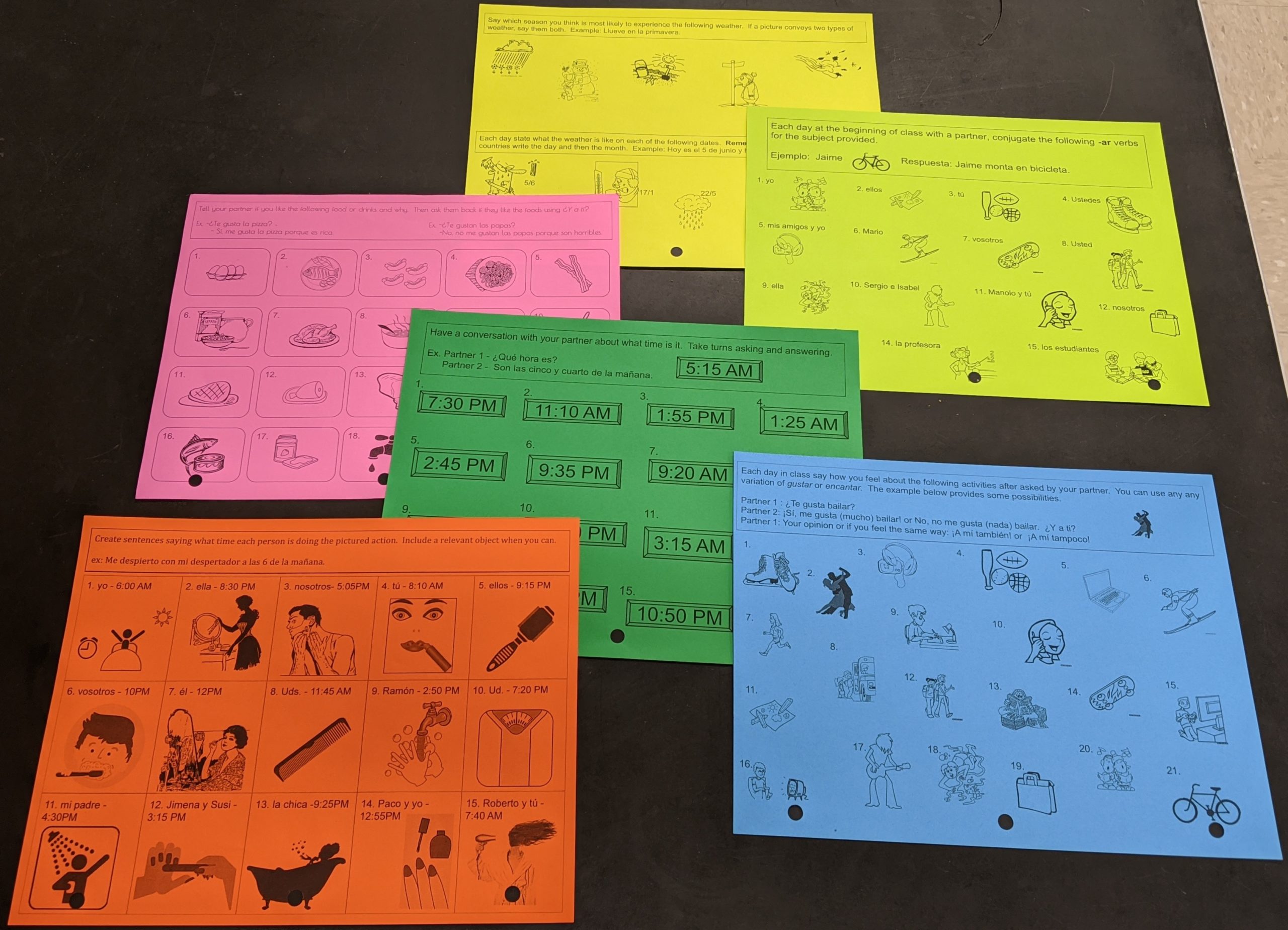When I began my first teaching job, my colleagues would often reference openers during our PLCs. It took me a while to figure out that they were talking about what I had always heard of as bell ringers, a short activity done at the beginning of class to practice specific grammar or vocabulary. While I had some experience with these types of activities, I was still a bit unsure of how to use or create them for my classes. Now 8 years later, I use openers almost daily in my Spanish 1 and 2 classes. Most days we practice the grammar or vocabulary of our current theme, but occasionally I use them to review material that we’ll be revisiting in class that day or material that was difficult for them. I am fortunate enough to teach in a district where I can purchase color paper, so I always print the activities on colored paper so they are easy for students to find. Since I use the activities multiple days in a row and revisit them throughout the year, the investment in the color paper is well worth it! And as an added bonus, I reinforce colors in Spanish when I ask them to take out their sheets!
Here is how I use openers in my classes:
At the top of the sheet I always include instructions, as well as a model for students to follow. My openers always practice basic conversations or sentence structures, so a model helps students have something to refer back to. I tend to put between 12 and 20 tasks on a sheet and we practice the same sheet multiple days in class, each day focusing on a different row. The first day I usually don’t ask any students to share with the class, but the second and subsequent days we’ll go over whichever row we were focused on for the day. I always have students complete these in partners, taking turns either starting the conversation or saying the sentences. Since I use these as oral activities, I never allow students to write down the answers, they are allowed to use their packets and ask for help when they do the activities, but have to search out whatever piece of information they need. Seeing as we do these multiple days in class, they become more self sufficient with each day so eventually they don’t need any notes.
My preference is to create openers that practice basic conversation skills, for example –¿Te gusta bailar? -Sí, me gusta bailar. ¿Y a ti? – A mí también. This provides more context and real life practice for the students and also prepares them for their interpersonal assessments. For openers that practice sentences, I usually give students a subject and then use a picture to demonstrate which verb, adjective or other vocabulary word I’d like them to use. Occasionally, like when I am practicing stem changing verbs, I don’t add subjects to the sheet, but tell students each day which subject I want them to use, for example the first day we use the yo form the whole time and the second day the tú.
Here’s why I continue to use openers in my classroom:
I don’t want to spend lots of time drilling verb forms during my class, I’d rather have my students use the language in more authentic ways. By doing daily openers, I can carve out about 5 minutes each day to specifically focus on grammar and then spend the rest of class finding more meaningful ways of acquiring or using the language. Also… my students need the practice! I’m sure I’m alone in saying my students don’t study as much as I would like! So these activities are a guaranteed way for them to practice the vocabulary and grammar of any given theme.